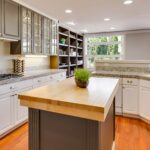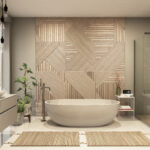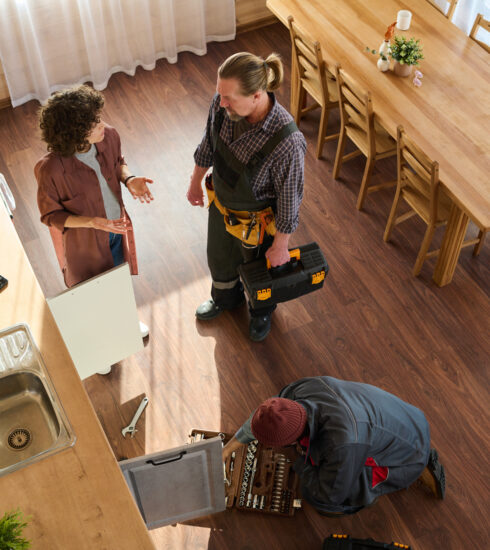Safe Surfaces: The Best Non-Toxic Countertops for Your Home
Creating a truly healthy home requires much more than choosing products that seem green.
The real goal is selecting materials that not only avoid initial off-gassing and chemical exposure
but also hold up over time without introducing new risks during use, cleaning, or eventual
replacement. It’s this full life-cycle view—from manufacturing to maintenance to disposal—that
shapes every decision I help my clients make.
One of the most overlooked—and often misunderstood—choices in healthy home design is
kitchen and bath countertops. These surfaces are front and center in our daily routines, so
choosing the healthiest option isn’t just a matter of style or price; it’s about protecting the air
you breathe and the surfaces you live with.
To simplify the decision process, I developed the Degree of Green Healthy Home (DGHH) rating
system—a tool to help prioritize human health alongside sustainability and durability. Let’s
explore the most common countertop materials from a non-toxic and healthy home
perspective.
Porcelain / Sintered Stone
DGHH: A+ | Price Point: High
Why It’s Healthy:
Porcelain and sintered stone are among the cleanest and safest countertop options available.
These slabs are made from natural materials and fired at high temperatures, creating an ultra-
dense, inert surface that emits zero VOCs. They’re naturally water, heat, and stain resistant—no
toxic sealers needed.
Health Highlights:
– No sealing required
– No chemical off-gassing
– Heat and UV resistant
– Food-safe and hygienic
Considerations: Limited edge profiles and availability, but an excellent choice for chemically
sensitive homeowners or anyone prioritizing clean indoor air.
Quartz
DGHH: A | Price Point: High
Why It’s Healthy:
Quartz countertops are made from 90-95% crushed natural stone blended with a small
percentage of resin binders. Once cured, the material becomes non-porous and chemically
stable, making it an excellent choice for those concerned with indoor air quality.
Health Highlights:
– Inert surface with minimal emissions
– No sealing or special maintenance
– Easy to clean with soap and water
– Resistant to mold and bacteria
Considerations: The resin can scorch under high heat, and repairs are difficult—but for most
homes, this is a healthy and low-maintenance option.
Composite Countertops
DGHH: A | Price Point: Medium to High
Why It’s Healthy:
Composed of layered paper and non-toxic resins, composite countertops offer the look and
performance of laminate but without the MDF or particleboard core that can release
formaldehyde. These slabs are heat and water resistant and emit very low VOCs, making them
suitable for healthy home projects.
Health Highlights:
– No formaldehyde-emitting substrate
– Low-emitting and durable
– Water and heat resistant
Considerations: Limited colors and availability may pose a challenge, but newer options are
expanding design choices.
Solid Surface
DGHH: A- | Price Point: Medium
Why It’s Healthy:
Solid surface materials (like Corian) combine stone dust, acrylic, and polyester resins. While not
entirely natural, once cured, they are low-emitting, durable, and easily repairable—important
traits for a healthy kitchen or bath.
Health Highlights:
– Inert and safe after curing
– Seamless surfaces reduce mold and bacteria
– Scratches and stains can be sanded out
Considerations: Some patterns look synthetic, and excessive heat may damage the surface.
Natural Stone (Granite, Marble, Quartzite)
DGHH: B- | Price Point: Medium to High
Why It’s Healthy:
Natural stones are inherently non-toxic and free of synthetic chemicals. However, their
required sealing introduces concern, as most stone sealers are solvent-based and can emit
VOCs. Regular maintenance is needed to avoid staining and microbial growth.
Health Highlights:
– No additives in the stone itself
– Durable and long-lasting
Considerations: Requires annual sealing with potentially toxic products. Seek water-based,
zero-VOC sealers to minimize health risks.
Cultured Marble
DGHH: B- | Price Point: Low
Why It’s Healthy:
A mix of crushed stone and polyester resin, cultured marble is often used in bathrooms for its
cost-effectiveness and integrated sink options. It does emit an initial strong odor due to the
resin content but becomes relatively stable after curing.
Health Highlights:
– Water-resistant
– Seamless sink design reduces mold risk
Considerations: Not repairable and limited in color options. Best reserved for low-impact
bathroom use rather than kitchens.
Laminate
DGHH: C+ | Price Point: Low
Why It’s Healthy (or Not):
Modern laminates are more visually appealing than ever, but they still rely on MDF or
particleboard substrates, which can off-gas urea-formaldehyde unless properly sealed. While
the top plastic layer becomes inert after curing, the glues used in manufacturing and
installation can contribute to indoor air pollution.
Health Highlights:
– Affordable
– Top layer is inert after curing
Considerations: Choose formaldehyde-free substrates and non-toxic adhesives whenever
possible. Still, not ideal for those with chemical sensitivities.
Conclusion: Choose What Supports Your Health Goals
Your choice of countertop should reflect your budget, lifestyle, health sensitivities, and
personal aesthetic. From zero-VOC porcelain to affordable and modern solid surfaces, there are
healthy options available at nearly every price point.
As always, remember: the healthiest home is one that considers not just the initial install, but
how the materials interact with your health over time. If you need help navigating your
countertop or material decisions, the Green Design Center and Degree of Green Healthy Home
system are here to guide you.
Stay safe. Build smart. Live healthy.
Health Starts at Home
You can find a large collection of healthy home materials at The Green Design Center, where Andy offers consultations on all materials and solutions. You can also learn more about Andy’s podcast Non Toxic Environments at NTE LIVE! or follow Andy on LinkedIN , Instagram, and YouTube to learn more about creating your own healthy home.
Photo via Francesca Tosolini @ Unsplash









